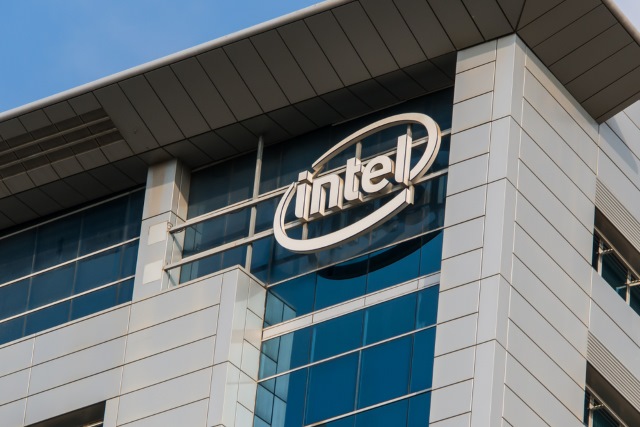
Cisco Talos releases free decryptor for Thanatos ransomware -- ThanatosDecryptor
Getting hit by a ransomware attack is bad enough; it means that your files have been encrypted and you'll be asked to pay a fee in a cryptocurrency such as Bitcoin or Ethereum to unlock them. The problem is that paying the ransom is in no way a guarantee that your files will be decrypted -- the ransomware was created by criminals, after all.
If you've been struck by the Thanatos ransomware, however, there's good news from Cisco Talos. The company has analyzed the malware and developed a free decryption tool that will enable you to get your files back without having to part with any money.

Battery saving app infects over 60,000 Android devices
Researchers at RiskIQ have uncovered a scam app that seeks to steal information and launches advert clicking to make money for the scammers.
The app is advertised as a battery saver. The twist here is that though it will actually do what it says and cut battery use, it does a lot of nasty stuff too.

Running Kodi on Amazon Fire TV or Fire TV Stick? You're at risk from cryptocurrency mining malware
Amazon’s Fire TV products are very popular with Kodi users, because it’s easy to install the media center software on it, along with any streaming add-ons.
Users of Kodi boxes are used to hearing of potential dangers -- some threats of which need to be taken with a pinch of salt -- but there’s a new malware variant that’s infecting Amazon Fire TV and Fire TV Stick devices globally, and which could well be on your device now.

Cryptomining still tops the malware charts for May
Currency miners continue to top the malware charts according to Check Point Software's latest Global Threat Index.
May 2018 marks the fifth consecutive month where cryptomining malware has dominated Check Point's index. The Coinhive cryptominer impacted 22 percent of organizations globally during May -- up from 16 percent in April, an increase of nearly 50 percent.

VPNFilter malware infection is much worse than first thought -- is your router affected?
It's just a couple of weeks since we first heard about the VPNFilter malware. Linked to Russia, the malware hit 500,000 routers around the world, but now Cisco's Talos security researchers are warning that the problem is much worse than anyone thought.
Initially thought to only affect SOHO routers and storage devices from Linksys, MikroTik, Netgear, TP-Link, and QNAP , the at-risk list has been extended to include consumer-grade routers from Linksys, MikroTik, Netgear and TP-Link. Researchers have also discovered that the malware is more powerful than initial assessments suggested -- it is now known to be able to bypass SSL encryption and perform man-in-the-middle attacks.

Cryptomining dominates mobile threat landscape
Threat actors are increasingly looking to exploit the popularity and volatility of cryptocurrency in their attacks on mobile devices according to a new report.
The latest Mobile Threat Landscape report from threat management specialist RiskIQ analyzed 120 mobile app stores and more than two billion daily scanned resources.

Malware insights -- How do you stack up?
In April, Lastline launched the first of our Malscape Monitor reports, for the fourth quarter of 2017. The report analyzes data from our Global Threat Intelligence Network to provide several insights and benchmarks on encounter rates with malware that CISOs can use to measure their own cyber risk and security performance.
There are three findings that I want to elaborate on in this blog post that I think will illustrate why many of today’s threat detection technologies are ineffective resulting in increased risk of a malware infection.

Cryptomining malware targets unpatched servers
Cybercriminals are increasingly targeting unpatched server vulnerabilities to infect machines with cryptomining malware, according to a new report.
The study from Check Point Software Technologies sees cryptomining malware dominate Check Point’s Top Ten Most Wanted Malware Index, the Coinhive variant retains the top spot with a global reach of 16 percent. Cryptoloot -- another crypto-mining malware -- is close behind with a global reach of 14 percent, while the Roughted malvertising malware came in third (11 percent).

Ubuntu Snap Store app contained cryptocurrency miner
There was a recent discovery that an app called "2048buntu" in the Ubuntu Snap Store contained cryptocurrency (Bytecoin) mining code. Thankfully, this app -- and the developer's other submissions -- have since been removed.
What is the downside to having this cryptocurrency code commingled with the expected code? Well, the mining can slow down your computer while also increasing your electricity use.

Endpoints still vulnerable despite advances in protection technology
Although endpoint security solutions have improved, a new survey of IT security professionals finds that three quarters believe their existing anti-malware solutions would be able to prevent no more than 70 percent of infections.
The study from anti-evasion specialist Minerva Labs shows nearly half of the respondents surveyed (48 percent) say that they have seen about the same number of malware infections than previous years while 32 percent claim to have seen an increase in infections.

90 percent of malware given unhelpful labels by AV tools
According to a new study, 90 percent of malicious files are given generic labels by AV tools, such as 'trojan.generic', providing limited guidance for successful remediation and leaving enterprises exposed to subsequent attacks resulting from compromised credentials.
The study by breach protection specialist Lastline analyzed tens of millions of samples that were for the most part scanned and released by other security solutions.

Intel Accelerated Memory Scanning offloads malware scanning to GPUs to boost performance
The Spectre and Meltdown vulnerabilities really focused people's attention on the security of processors, and Intel has been at pains to convince users that it takes security seriously. With this in mind, the company has now announced a new Threat Detection Technology which introduces two new malware-fighting techniques.
Accelerated Memory Scanning offloads malware scanning to GPUs, taking the strain off CPUs and helping to improve performance. There's already interest, with Microsoft planning to add support to Windows Defender Advanced Threat Protection. Intel has also revealed Advanced Platform Telemetry which is supposed to cut down on false positives.

Consumer cryptomining attacks increase 4,000 percent
We already know that cryptomining is currently flavor of the month among malware creators, but a new report released today by Malwarebytes puts some startling figures on the problem.
On consumer systems cryptomining detections were up a massive 4,000 percent in the last quarter, while ransomware detections fell 35 percent over the same period. For businesses cryptomining detections rose 27 percent this quarter and ransomware detections 28 percent. However, Spyware is still the cybercriminals' favourite choice, with over 80,000 detections in January alone.

McAfee tracks eight new threats every second as cyber criminals embrace innovation
Thanks to a surge in healthcare attacks, cryptocurrency mining and fileless malware, McAfee Labs latest quarterly threat report has seen an average of eight new threat samples per second.
Highlights of the report include the healthcare sector experiencing a 211 percent increase in disclosed security incidents in 2017, and fileless malware leveraging Microsoft PowerShell growing 267 percent in the fourth quarter.

White House joins UK government in blaming Russia for NotPetya
The US government has joined the government of the UK in pointing the finger of blame at Russia for the NotPetya cyberattacks. The ransomware/destructoware hit computers around the world last June.
After speculation that the attack was a state-sponsored one carried out by Russia, this position has now been confirmed as the White House accused the nation of the "reckless and indiscriminate." At the same time, the UK's National Cyber Security Centre said that the Russian military was "almost certainly" responsible for the attack.
